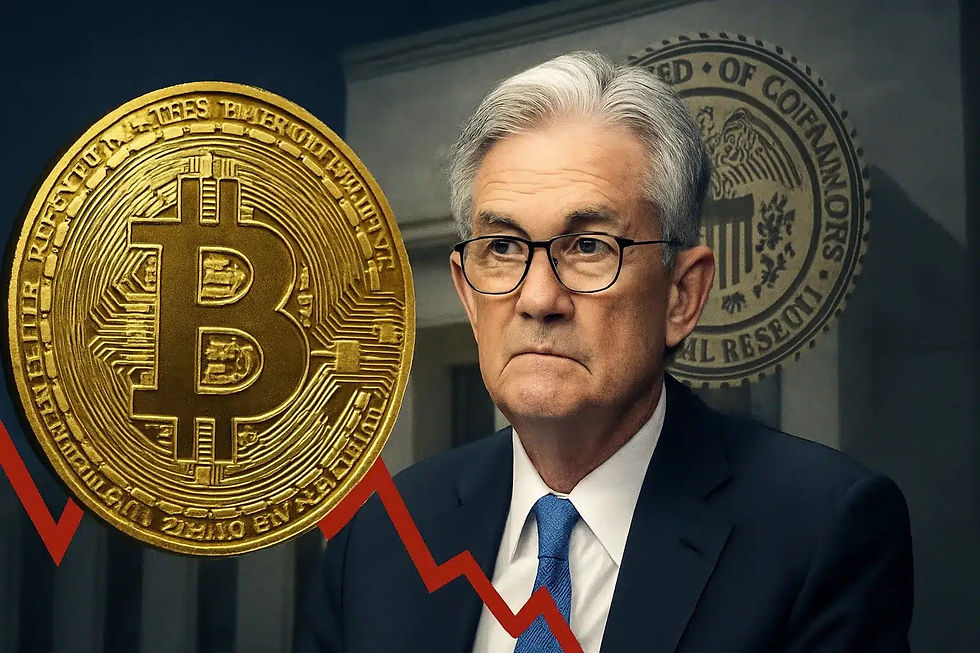ECB’s Tariff Tightrope: Strong Euro, Low Inflation, and Crypto’s Quiet Risk
- Gator

- Jun 16
- 3 min read

Navigating a New Economic Storm
The European Central Bank (ECB) faces a delicate challenge as U.S. tariffs, a surging euro, and sub-2% inflation threaten Eurozone growth. On June 5, 2025, the ECB cut interest rates by 25 basis points to 2%, its eighth cut in a year, aiming to bolster a sluggish economy battered by trade tensions. Yet, as crypto markets grapple with liquidity risks—discussed yesterday in relation to fragmented exchanges—this ECB pivot could ripple through digital assets, with Bitcoin and stablecoins feeling the heat.
Tariffs and Growth: A Disinflationary Drag
U.S. tariffs, including a 20% levy on EU exports (temporarily cut to 10% for 90 days), are projected to shave 0.5–1% off Eurozone GDP in 2025, with ECB sources warning of stagnation if retaliation escalates. ECB President Christine Lagarde noted that Chinese goods, diverted from the U.S., could flood Europe, dampening prices. March 2025 inflation at 2.2% is near the ECB’s 2% target, but economists predict a drop to 1.9% by year-end, driven by cheaper imports and falling oil prices. This disinflationary pressure echoes yesterday’s crypto liquidity concerns, where low liquidity amplifies price shocks during global uncertainty.
Strong Euro, Weak Exports
The euro’s 9% rise against the dollar in 2025, hitting an all-time high on a trade-weighted basis, is squeezing export-driven economies like Germany and Italy. X posts, such as @adonataccio’s June 12 analysis, warn that a strong euro (at 1.16) undermines competitiveness, with manufacturing PMIs softening. ECB Vice-President Luis de Guindos downplayed the euro’s strength, claiming inflation remains on track, but critics argue it exacerbates tariff impacts. For crypto, a stronger euro could depress USD-denominated assets like Bitcoin, already facing $106,000 resistance, as discussed in prior Bitcoin price analyses.
ECB’s Rate Cuts: A Crypto Connection
The ECB’s June 5 cut to 2%—with markets expecting another to 1.75% by year-end—aims to counter weak 0.6% Q1 2025 growth, distorted by Ireland’s tax-driven exports. Lower rates could spur risk assets, including crypto, but liquidity fragmentation, as highlighted yesterday, limits upside. Stablecoins like USDC, backed by Circle’s regulatory clout, may benefit from Eurozone demand for dollar-pegged assets amid a strong euro, aligning with Walmart/Amazon’s stablecoin plans. However, X user @PiQSuite notes tariffs’ growth drag overshadows rate cut benefits, keeping crypto sentiment cautious.
Risks: Trade Wars and Crypto Volatility
Lagarde’s warning of a 0.5% inflation spike from tariffs assumes EU retaliation, but ECB board member Piero Cipollone sees disinflation as more likely, given the euro’s strength and Chinese oversupply. This uncertainty mirrors crypto’s structural risks, like the Douyin scam’s $6.9 million loss or WazirX’s hack, where weak safeguards amplify losses. Geopolitical shocks, including Middle East tensions driving oil to $72/barrel, already triggered $1.15 million in crypto liquidations on June 13. Without unified liquidity pools or regulatory clarity, crypto remains vulnerable to ECB-driven market swings.
Conclusion: A Fragile Balance with Crypto Consequences
The ECB’s rate cuts and tariff response aim to shield the Eurozone from stagnation, but a strong euro and disinflationary pressures signal tough times ahead. As with yesterday’s crypto liquidity and scam discussions, structural weaknesses magnify risks. Bitcoin may face downward pressure from a robust euro, while stablecoins could see demand as hedges. Yet, without addressing trade war fallout or crypto’s fragmented liquidity, the ECB’s moves risk fueling volatility rather than stability. Like WazirX’s embattled users, crypto investors must brace for uncertainty in this high-stakes economic chess game.





Comments